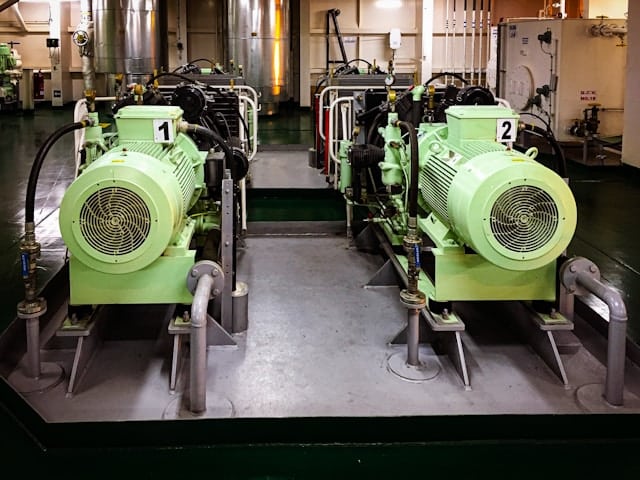How to Integrate Renewable Energy Systems into UK’s Historical Buildings?

The UK is steeped in history, with thousands of historic buildings that not only carry a rich heritage but also serve as homes and workplaces. With the growing awareness about carbon emissions and the need to transition to green energy solutions, there is a growing concern about how these old buildings can be retrofitted to accommodate renewable energy systems while preserving their historical essence. This article seeks to address this by discussing ways to integrate renewable energy systems into the UK’s historical buildings.
Retrofitting Historical Buildings with Energy Efficient Systems
Historic buildings are typically characterized by their unique architectural features and the use of traditional materials, which may not be energy efficient by today’s standards. The challenge lies in retrofitting these buildings with modern, energy-efficient systems without disrupting their historic fabric.
A lire aussi : Exploring the latest from your it life services provider
Air sealing is one such method that can be applied to historical buildings. This involves sealing air leaks around windows, doors, and other openings to reduce drafts and heat loss. To retain the building’s aesthetics, this can be done using materials that are visually compatible with the original ones.
In addition to air sealing, insulation is another method to improve a building’s energy efficiency. Insulation can be added in the roof, walls, and under the floors to reduce heat loss. Again, to maintain the building’s architectural integrity, insulation materials that do not alter the building’s appearance should be used.
A lire en complément : Meribel mottaret flat rental: your gateway to ski adventures
Integrating Renewable Energy Sources
Moving beyond efficiency, the integration of renewable power sources is an essential aspect of making historic buildings more sustainable. Two forms of renewable energy that can be employed are solar and geothermal energy.
Solar energy systems, like solar panels, can be integrated into historic buildings in ways that do not alter their historic character. For instance, panels can be placed in areas that are not visible from the ground, or thin-film solar panels can be used, which are more aesthetically pleasing.
Similarly, geothermal heating systems can be integrated into historic buildings as they require minimal alteration to the existing building structure. This system involves installing a heat pump that uses the constant temperature of the earth below the ground to heat and cool the building.
Upgrading Electrical Systems
An integral part of integrating renewable energy systems into historic buildings is the upgrading of electrical systems. This is necessary to handle the demands of new technology and to ensure the building’s safety.
The challenge in upgrading the electrical system in a historic building is doing so without damaging the historic fabric. This requires careful planning and execution, often involving hiding wires and cables behind walls or under floors.
When upgrading, the original features like switches and outlets should be retained wherever possible. However, if these need to be replaced, replica replacements can be used to maintain the building’s historic character.
Adhering to Building Regulations and Planning Permissions in England
When considering retrofitting historic buildings in the UK with renewable energy systems, adherence to building regulations and planning permissions is crucial. These are set in place to protect the heritage of historic buildings and to ensure that any alterations do not negatively impact the historic character.
For instance, in England, if a building is listed, consent is required for any alteration that might affect its character. This includes changes to the building’s physical structure as well as the installation of renewable energy systems like solar panels. Therefore, it is important to consult with local planning authorities before starting any retrofitting work.
Balancing Heritage Conservation and Energy Efficiency
Balancing heritage conservation and energy efficiency is a complex task that requires careful planning and execution. This balance can be achieved by using a combination of traditional and modern techniques and materials, as well as by integrating renewable energy systems in a way that does not compromise the building’s historical integrity.
One approach could be to undertake a building performance evaluation to understand how the building currently uses energy. This can help identify areas where improvement is needed and where renewable energy systems can be integrated most effectively.
In conclusion, while retrofitting historic buildings with renewable energy systems can be challenging, it is certainly feasible. With careful planning and execution, these buildings can not only contribute to the UK’s green energy goals but also continue to preserve the country’s rich history and heritage.
Implementing Offshore Wind Energy
Among the array of available renewable energy sources, offshore wind energy stands out as a viable option for historic buildings in the UK, particularly those located along the coast. The use of wind turbines to harness the power of the wind has been growing in popularity due to their efficiency and low carbon emissions.
Offshore wind farms can generate electricity without any direct alteration to the historic buildings. The energy produced can be transmitted to the buildings, thereby reducing the reliance on traditional energy sources. This indirect method of incorporating renewable energy is beneficial in preserving the architectural integrity of historic buildings.
Of course, there are considerations to be taken into account when implementing offshore wind energy. For instance, the visual impact of wind turbines on the landscape needs to be assessed, especially in areas of natural beauty or conservation areas. However, as technology advances, more discreet design and placement of turbines are becoming possible, reducing their effect on the visual environment.
Navigating Planning Permissions and Building Consent
Before embarking on any alterations or installations to introduce renewable energy systems to historic buildings, one must bear in mind the significance of planning permissions and building consent. These are critical elements that aim to protect the architectural and historical value of the listed buildings.
In England, any modification that could impact the character of a listed building requires consent. This includes changes to the physical structure of the building, as well as the introduction of renewable energy systems such as solar panels and heat pumps. It is advisable to liaise with local planning authorities before initiating any retrofitting efforts.
The Historic England organisation provides guidance on making energy efficiency improvements in historic homes. They hold the view that such improvements should be carried out sympathetically, without damaging the historic character of the building. The key is to balance the need for energy efficiency with the preservation of the building’s historical integrity.
Conclusion: Melding History with Future
Integrating renewable energy systems into the UK’s historic buildings is not a straightforward task. It requires a careful balance of preserving the history and character of these buildings, while also making them more energy-efficient and climate-friendly.
By conducting a thorough building performance evaluation, it is possible to understand how the building currently utilises energy and identify where improvements can be made. From energy-efficient measures such as air sealing and insulation to the introduction of renewable energy systems like solar panels, geothermal heat pumps, or even offshore wind energy, the potential for making historic buildings more sustainable is vast.
However, the implementation of such measures should always be done with an eye on preserving the character and heritage of the building. Working closely with local planning authorities and obtaining the necessary consents is crucial to ensure that the balance between heritage conservation and energy efficiency is maintained.
Ultimately, retrofitting historic buildings with renewable energy systems provides a unique opportunity for these buildings to contribute to the UK’s green energy goals. It demonstrates that it is possible to honour and preserve our history while also looking ahead and contributing to a sustainable future.
